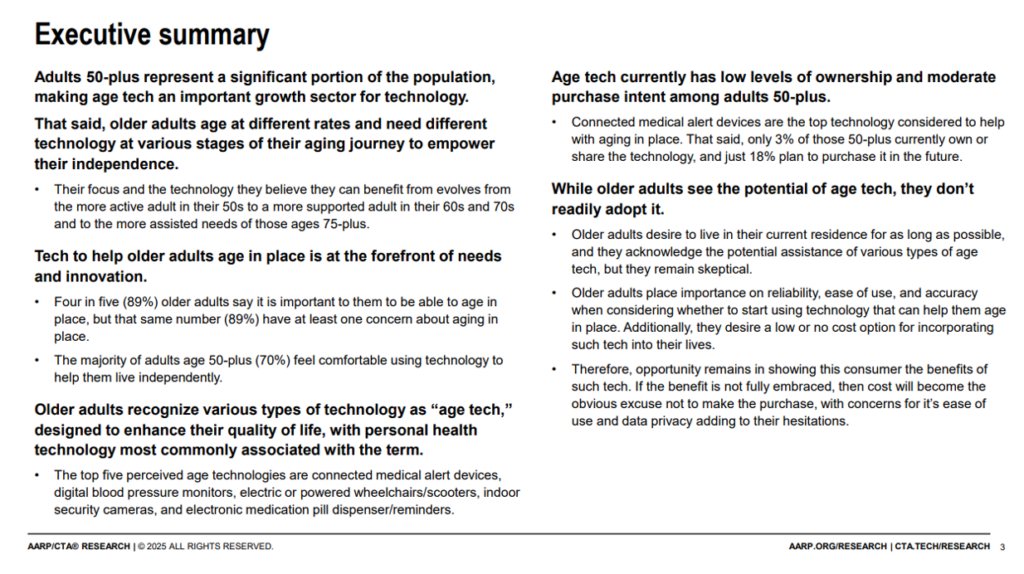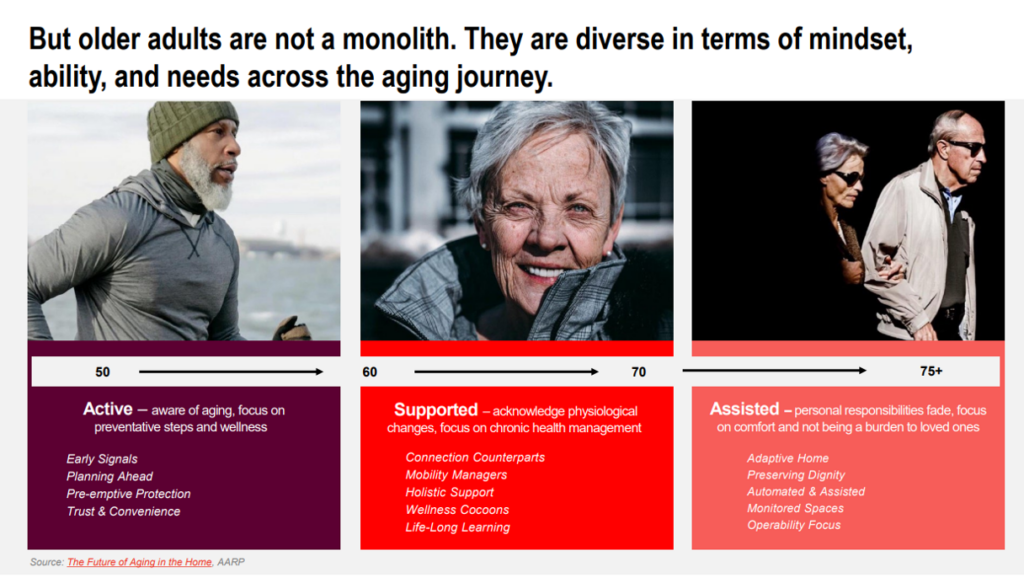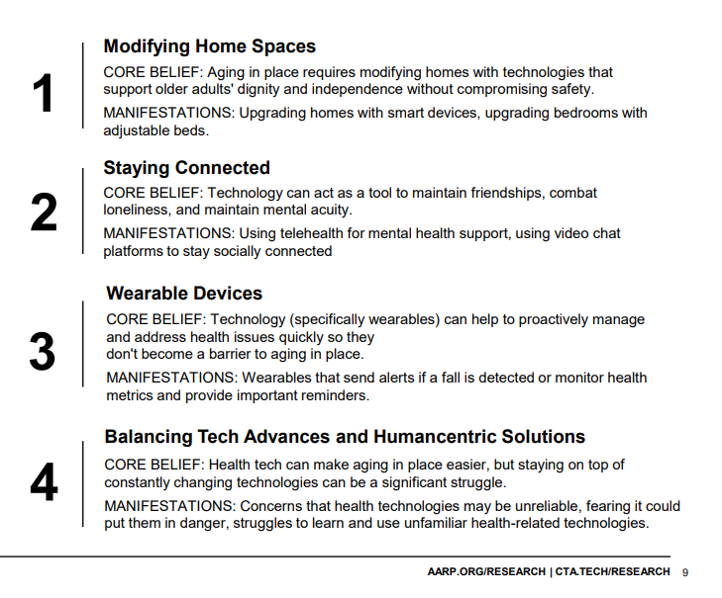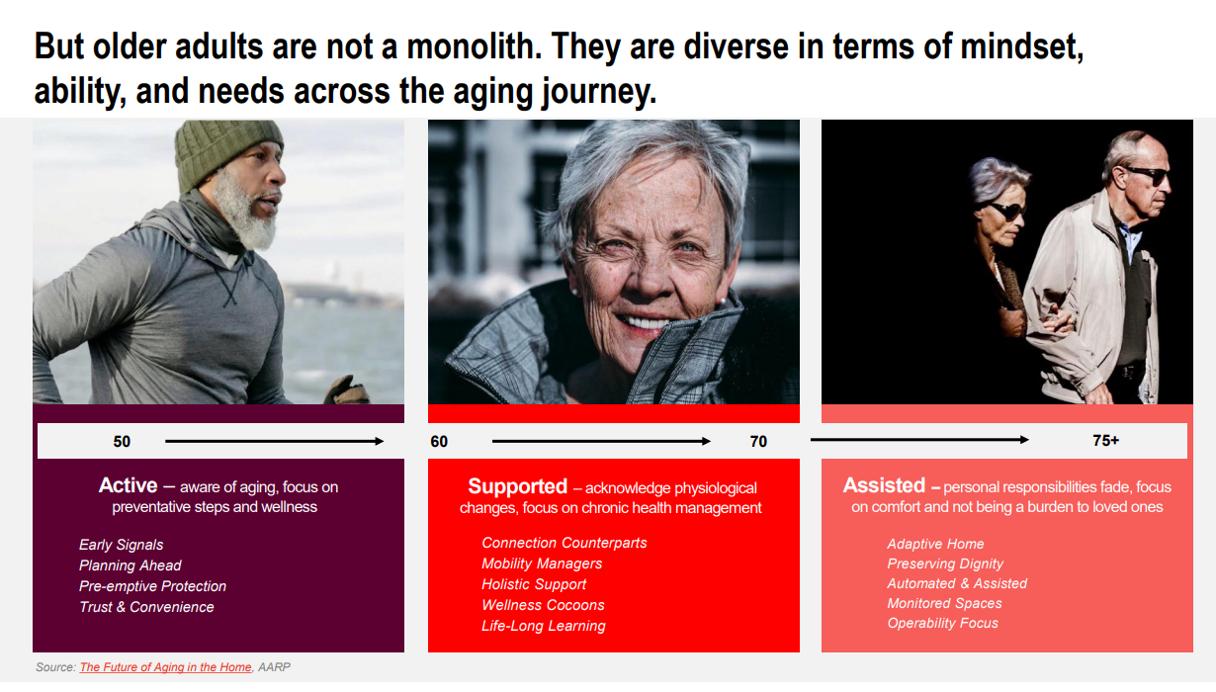You would expect an auto manufacturer, a Big Tech, or a big-screen TV company would commandeer the largest exhibit booths at CES 2025, the largest annual conference of consumer-facing technology stakeholders.
We can add another exhibitor to the largest CES “real estate” presences at #CES2025: that would be AARP hosting the AgeTech Collaborative.
And a pickleball court, too!

Why feature pickleball at a AARP booth at CES?
Well, IMHO health is everywhere at #CES2025, and pickleball, the fastest-growing sport in the U.S., is good for many facets of health: physical to be sure, and also social and brain health among other benefits to holistic health — for people over 50, sure, and really everyone keen on this activity.
I spent time with Andy Miller, AARP’s SVP of the Innovation and Product Development, discussing the program’s history and AARP’s growing interest in technology as an assist and support for healthy aging at every stage of getting older. Launched in 2021, the Collaborative now has a family of nearly 180 start-ups that address a broad range of products and services that can well serve the target market of the Association — that is, people 50 years of age and older. This year, just a few of these innovators include,
- CardioSignal, with a digital health focus on heart disease
- Embr Labs, developer of a wearable device for the wrist that measures temperature and can support women’s menopause journeys (think: relieving hot flashes!)
- Kemtai, an exercise platform that provides feedback for physical therapy and the huge category of musculoskeletal care (MSK)
- Kinsome, riffing off the “kin” word providing a platform for building intergenerational bonds between grandparents and younger people in their lives
- Osteoboost, another women’s health focused product to treat osteopenia, the precursor to osteoporosis, targeting women post-menopause
- SupportPay, serving up services that people people manage finances (remember: financial health is embedded in overall health and wellbeing, too); and,
- Virtuleap, promoting brain health using virtual reality and AI technology,
among dozens of other innovations.
This week, AARP launched three publications in parallel with showing off the Collaborative and dozens of speakers this week during CES 2025. Based on extensive market research into AARP’s target market of older people, this triple-play of reports is a treasure-trove of data and insights for those of us who are design-thinking stakeholders in health for older consumers and the caregivers who love and care for them.
Empowering Independence with Technology Among Adults Age 50-Plus starts with the (enlightened) premise that people want to age as independently as possible — and technology supports can help when well-informed, – designed, and -implemented.

As the executive summary for the report details here, the 50+ population is a huge addressable market for technology innovators.
But this isn’t a field-of-dreams scenario where we can assume that we can build it, and “they” (that is, older consumers and their caregivers) will come to the field and pay for shiny new things. 
Folks over 50 are not a monolith, the AARP study documents, identifying three journeys of people as we age: our active stage, needs for support, and demands for greater assistance.
In our active phases, we plan ahead and look for trusted partners. In our supported stage, we seek “wellness cocoons,” holistic support, and opportunities for lifelong learning assuring we can be as independent as possible. In the third phase of aging, we seek assistance for keeping that independence, taking many forms including the acceptance of being monitored “just in case” — all, with a context of preserving our dignity as we age with grace. 
So, we can turn a page into another of the reports on The Future of Aging in the Home, which calls out technology solutions across the aging journey shown here — there’s that financial health pillar, in addition to supporting brain health, social connection, overall holistic health, personal security, and convenience through streamlining the technology experience. 
AARP leaves us with these four pragmatic design principles which can be useful True North’s to keep in mind if you are working on programs focusing on older peoples’ health, healthy aging, and independence.
I’m particularly keen for us to focus on numbers 2 and 4 which too often are overlooked:
Staying connected has two riff’s, in both connectivity via technology (such as WiFi or cellular connection) and social connectivity for mental and emotional well-being; and,
Balancing tech advances and humancentric solutions, assuring that empathy, ethics- and privacy-by design are embedded in the process of bringing a new product or service to market — thinking about the “why” before the “what” of the device or technology. What challenge are we seeking to solve? How can that new thing demonstrate respect, empathy, authenticity and forge trust?
These are themes relevant to all attendees of #CES2025. We would be wise to keep them in mind as we work toward Health (and Human) Security for All (HS4A).






 Grateful to Gregg Malkary for inviting me to join his podcast
Grateful to Gregg Malkary for inviting me to join his podcast  This conversation with Lynn Hanessian, chief strategist at Edelman, rings truer in today's context than on the day we recorded it. We're
This conversation with Lynn Hanessian, chief strategist at Edelman, rings truer in today's context than on the day we recorded it. We're